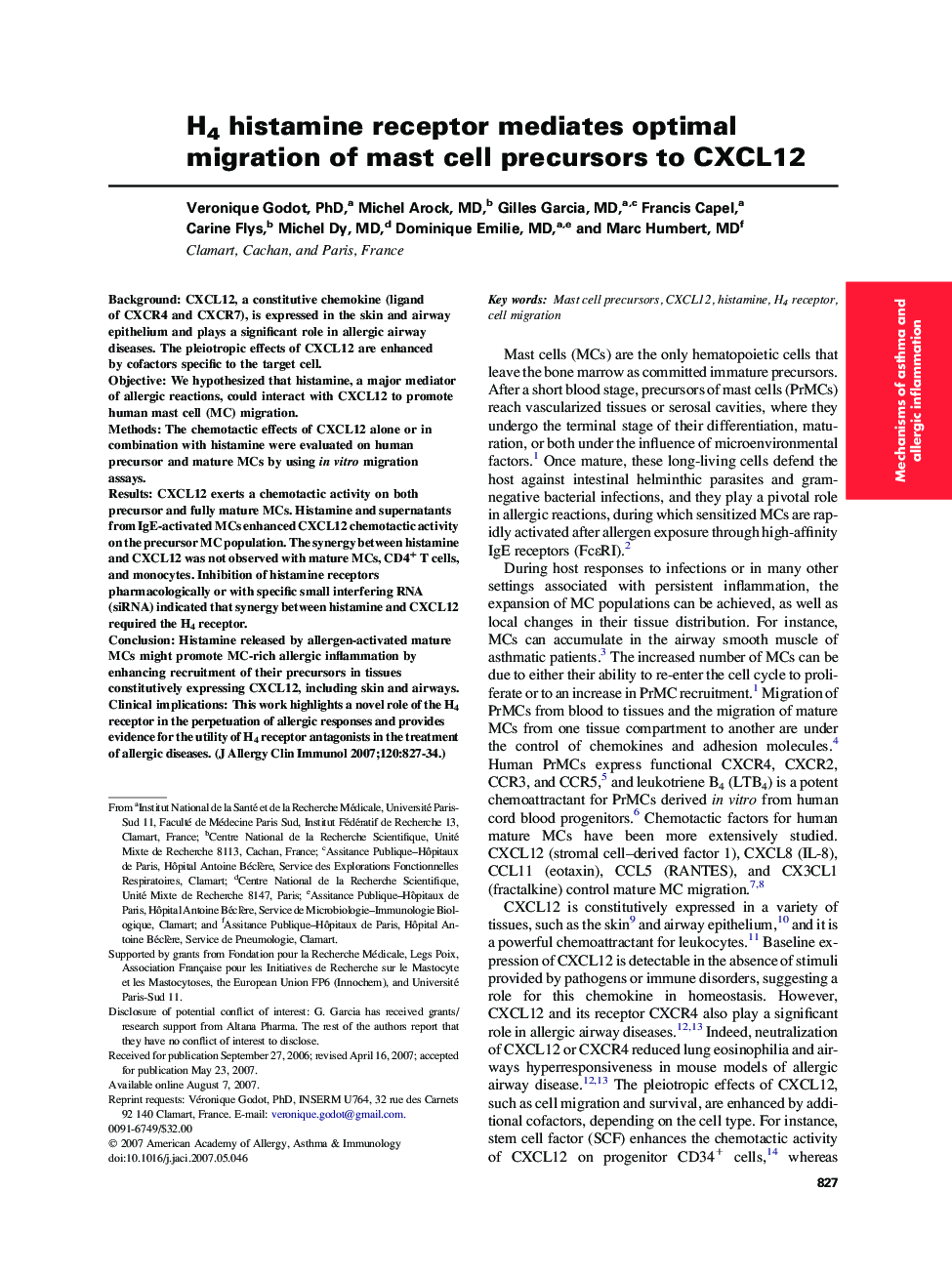| Article ID | Journal | Published Year | Pages | File Type |
|---|---|---|---|---|
| 3203195 | Journal of Allergy and Clinical Immunology | 2007 | 8 Pages |
BackgroundCXCL12, a constitutive chemokine (ligand of CXCR4 and CXCR7), is expressed in the skin and airway epithelium and plays a significant role in allergic airway diseases. The pleiotropic effects of CXCL12 are enhanced by cofactors specific to the target cell.ObjectiveWe hypothesized that histamine, a major mediator of allergic reactions, could interact with CXCL12 to promote human mast cell (MC) migration.MethodsThe chemotactic effects of CXCL12 alone or in combination with histamine were evaluated on human precursor and mature MCs by using in vitro migration assays.ResultsCXCL12 exerts a chemotactic activity on both precursor and fully mature MCs. Histamine and supernatants from IgE-activated MCs enhanced CXCL12 chemotactic activity on the precursor MC population. The synergy between histamine and CXCL12 was not observed with mature MCs, CD4+ T cells, and monocytes. Inhibition of histamine receptors pharmacologically or with specific small interfering RNA (siRNA) indicated that synergy between histamine and CXCL12 required the H4 receptor.ConclusionHistamine released by allergen-activated mature MCs might promote MC-rich allergic inflammation by enhancing recruitment of their precursors in tissues constitutively expressing CXCL12, including skin and airways.Clinical implicationsThis work highlights a novel role of the H4 receptor in the perpetuation of allergic responses and provides evidence for the utility of H4 receptor antagonists in the treatment of allergic diseases.
